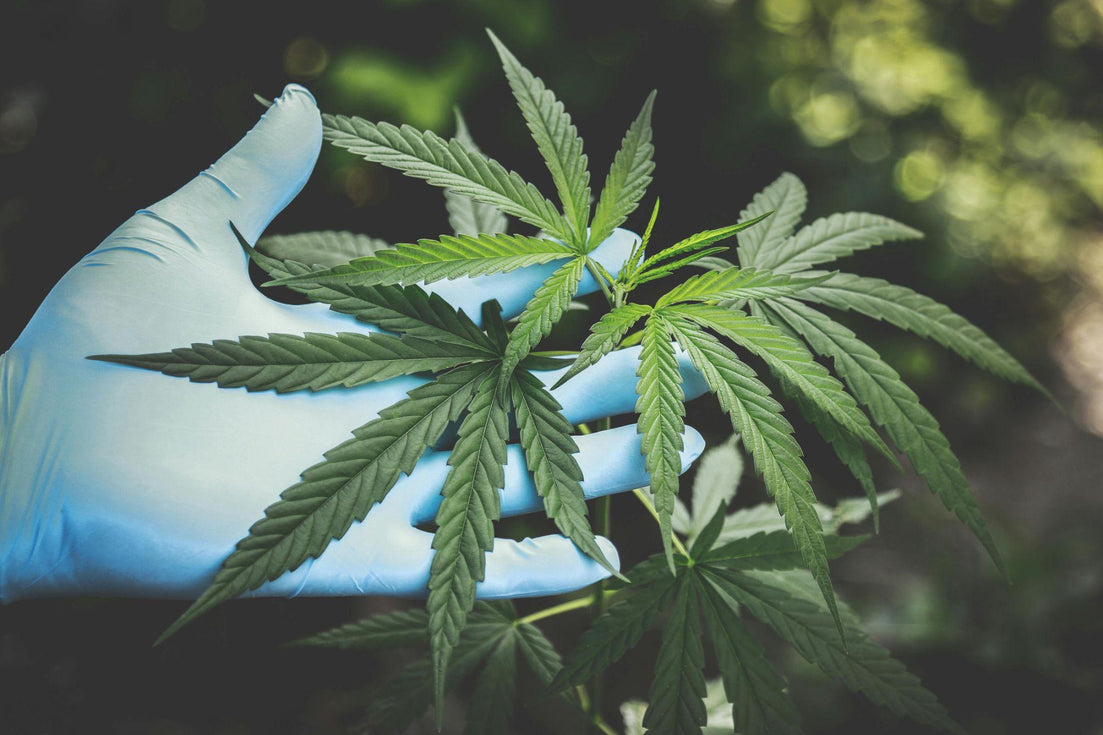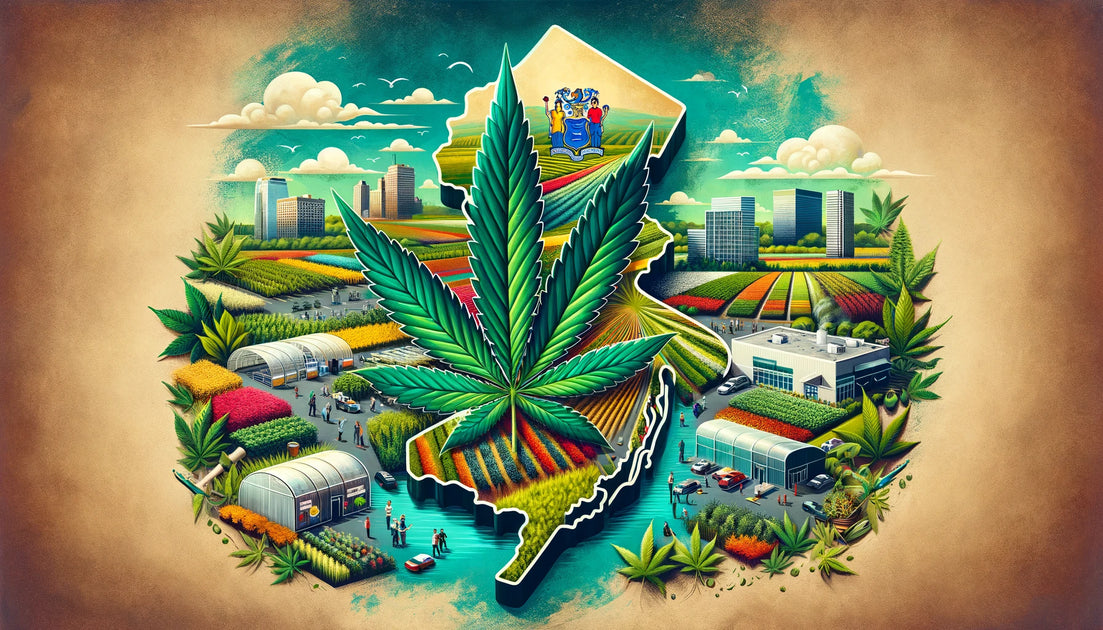Your cart is currently empty.

Ever felt like you've been sold a lemon when all you wanted was an apple? Imagine the disappointment. Now, think about that in terms of your cannabis use. Have you ever thought if what's claimed to be 'high-quality' weed might actually contain something harmful?
Plant Growth Regulators (PGRs), commonly used in horticulture but not approved for cannabis cultivation, can creep into your stash without even a distinct taste or smell as a warning sign.
'But why should I care?' , some may ask. Picture this: consuming PGR-laced cannabis could lead to headaches and dizziness right away, with potential long-term damage to organs such as the liver and kidneys down the line.
Feeling a mix of curiosity and concern? Don't worry, we're about to embark on an eye-opening adventure together – guiding you in identifying these unwelcome visitors.
Understanding PGRs in Cannabis Cultivation
The world of cannabis cultivation is full of surprises. One such surprise is Plant Growth Regulators (PGRs). But what exactly are these mysterious substances?
What are PGRs?
PGRs, or plant growth regulators, are a group of chemicals used to manipulate the growth and development of plants. They're like personal trainers for your pot plant, helping it bulk up and look its best.
Promoting cell division, leaf enlargement, and flowering; they help enhance both the appearance and yield. While this might sound fantastic on paper - bigger buds equals more profit right? Not so fast.
PGRs in Horticulture vs. Cannabis Cultivation
In horticulture, using PGR's can be as normal as watering your plants every day. Studies have shown that their use can significantly increase crop yields.
Cannabis cultivation, however, sings a different tune when it comes to these 'plant steroids'. Many countries, including Canada, have strict regulations against their use due to potential health risks associated with consuming products grown with them.
The Health Risks of Consuming PGR-Contaminated Cannabis
Let's not mince words here: there’s some bad juju linked with smoking weed treated with chemical PGR's.
Short-Term Adverse Effects
Imagine lighting up a joint and instead of feeling relaxed, you're hit with headaches, dizziness, or even nausea. These are just some of the reported short-term effects of PGR-contaminated cannabis.
Long-Term Health Implications
Consuming PGR-contaminated cannabis over a long period of time can cause serious damage to the liver and kidneys. Not exactly what one signs up for when they’re looking for a good time.
Detecting PGR-Contaminated Cannabis
Alright, let's dive into it.
The Health Risks of Consuming PGR-Contaminated Cannabis
As a user, you should be mindful that the application of Plant Growth Regulators (PGRs) in cannabis growth can have serious health consequences. Let's explore these risks more deeply.
Short-Term Adverse Effects
PGR-contaminated weed often causes immediate side effects such as headaches and dizziness. This is because certain types of PGRs have toxic properties which affect your nervous system as per this study.
Nausea is another common short-term effect due to how some PGRs interact with our bodies' digestive systems. But it doesn't stop there; people also report experiencing increased anxiety and paranoia after consuming PGR-laden buds, altering what could have been an enjoyable experience into something quite uncomfortable.
Long-Term Health Implications
Beyond the immediate discomfort, long-term consumption poses serious threats to vital organs like the liver and kidneys according to this research article from The Journal of Pharmacology and Experimental Therapeutics. It indicates that prolonged exposure may cause organ damage or failure over time.
This threat isn’t just theoretical - hospital records reveal a worrying number of cases where regular consumers ended up requiring medical help for severe kidney problems directly linked back to their cannabis habits.
In addition, continued ingestion can result in hormonal imbalances leading to fertility issues down the line. Research has shown men who regularly smoke or ingest marijuana have significantly lower sperm counts and altered testosterone levels. This doesn't just impact those looking to start a family - these hormonal imbalances can affect everything from mood to muscle development.
Finally, let's talk about cancer risks. Some PGRs used in growing cannabis are known to cause cancer. It's hard to believe, but smoking weed treated with certain PGRs could be harmful.
When it comes to growing cannabis, using PGRs can be a real health hazard. You might experience headaches, dizziness, and even feelings of anxiety or paranoia in the short term. But that's not all - long-term use is no picnic either. It could put your liver and kidneys at risk, throw off your hormones causing fertility issues or mood swings, and even lead to problems with muscle development. And believe it or not, some PGRs are even worse.
Detecting PGR-Contaminated Cannabis
Recognizing cannabis that's been treated with Plant Growth Regulators (PGRs) can be a challenge, especially since these chemicals don't change the weed's smell or taste. But, by focusing on certain visual cues and using your knowledge about PGRs' effects on bud growth, you can improve your detection skills.
Visual Cues for Detection
The first step to spot PGR-contaminated cannabis is observing its physical characteristics. If the cannabis appears unusually dense, it's likely that PGRs have been used to produce it.
Cannabis plants treated with PGRs often produce unusually dense buds5. These super-dense nugs might seem appealing at first glance; however, they're usually not as potent as naturally grown ones because of the forced rapid growth rate caused by the regulators.
Apart from their abnormal density, these buds may also exhibit unnatural colors – sometimes darker than usual – due to high levels of chlorophyll trapped within them during fast-paced development.10.
Peculiarly excessive trichome production is another red flag for spotting weed contaminated with PGRs. If you see more shiny crystals covering the bud surface than what seems natural - beware. Those are likely an attempt by the plant to protect itself against harmful chemical substances10.
Don't be fooled by the glitz and glamour; not all that sparkles is gold. It's always wise to be aware of the origin. Purchase cannabis from reputable sellers who are transparent about their growing practices. Verify that the cannabis you buy is free of plant growth regulators to ensure a top-notch quality.
The Magnifying Glass Trick
There's another way to spot PGRs too. Just grab a magnifying glass or jeweler’s loupe11. Take a good look at your...
The Impact of PGRs on Cannabis Potency and Flavor
PGRs (Plant Growth Regulators) can have a noteworthy effect on both the potency and flavor of cannabis, as they are known to impact plants' growth and development. This section delves into how these substances can affect your cannabis experience.
The Effect on Potency
Potency is a key attribute for many cannabis users; it determines the strength or effectiveness of the product. But when PGRs come into play, this crucial aspect may be compromised. As an example, some studies suggest that excessive use of certain types of PGRs might lead to decreased THC levels - THC being one compound responsible for marijuana's psychoactive effects.
It seems counterintuitive as growers typically use PGRs with hopes to boost yield and aesthetic appeal. However, while these chemicals might result in bigger buds visually speaking, their effect at a molecular level could mean less desirable outcomes from a user standpoint due to potential reduction in cannabinoid content.
Flavor Alterations Due To PGRs
Cannabis connoisseurs often appreciate diverse flavors offered by different strains - from sweet fruity notes to earthy undertones; however, growing practices using Plant Growth Regulators could tamper with this aromatic spectrum.
Research has shown a link between heavy usage of synthetic chemical-based fertilizers including certain types of PGRs leading towards more bland-tasting weed compared against organic farming methods which tend not to utilize these substances. It’s thought that the chemical inputs can suppress natural terpene production - those compounds responsible for the distinct scent and flavor of cannabis.
This alteration doesn't just mean a less enjoyable user experience; it also signifies an interruption in the entourage effect. The phrase "entourage effect" describes how the various components of cannabis, including terpenes and cannabinoids, interact to bolster their impact on our physiology.
Plant Growth Regulators (PGRs) can tweak your cannabis experience, possibly decreasing potency and changing flavor. Even though they may result in larger buds, overuse of PGRs could cut down THC levels, weakening the product's punch. Moreover, synthetic fertilizers like some PGRs might dull the taste of weed by holding back natural terpene production - messing with more than just flavor.
The Illicit Use of PGRs in Cannabis Cultivation
Illicit growers have a reputation for taking shortcuts to boost their profits, often at the expense of consumer health. One such shortcut involves the use of Plant Growth Regulators (PGRs).
Why Illicit Growers Use PGRs
PGRs are attractive to illicit cannabis cultivators because they increase plant size and weight quickly. More weight means more product to sell, leading to higher profit margins.
This might sound like good business sense on the surface. But here's where things get shady: while these substances do bulk up plants, they also bring about some serious concerns around safety and quality.
The Downside: Quality Takes a Hit
Cannabis grown with PGRs tends not only be less potent but also harsher on inhalation compared with organically-grown alternatives according to research from NCBI. The flavor profile is usually altered too – think burnt rubber instead of piney freshness.
Risks To Consumers' Health
From short-term effects like headaches and dizziness, all the way through liver or kidney damage over time; consuming PGR-laden weed isn't worth it - no matter how cheap it may seem studies show.
Detecting Contaminated Weed
- Dense buds that feel heavy for their size can indicate excessive growth due to unnatural stimulants.
- An unnatural color – a chemical-like sheen or unusual shade of green, can also be indicative.
- Lastly, look out for excessive trichome production. It might seem counterintuitive since we often associate crystal-covered buds with potency but this is another tell-tale sign of PGR use.
When it comes to the wild, untamed frontier of unregulated cannabis markets,
FAQs in Relation to How to Avoid Pgr-Contaminated Weed
Is weed better with PGR?
No, cannabis treated with Plant Growth Regulators (PGRs) often has reduced potency and altered flavor. Plus, it could pose health risks.
What week should I use PGR for weed?
You shouldn't use PGRs on cannabis at all. Their usage isn't approved in regulated markets due to potential health hazards.
Can PGR be organic?
Potentially yes, there are some organic-based PGRs. But remember that even organic ones aren't recommended for cannabis cultivation because of safety concerns.
Why do growers use PGR?
Ilicit growers might resort to using them because they can increase yield and enhance appearance despite the associated health risks and reduced quality.
Conclusion
Learning how to avoid PGR-contaminated weed is like mastering a survival skill. It's about safeguarding your health, ensuring the purity of what you consume.
PGRs are widely used in horticulture but pose serious risks when introduced into cannabis cultivation. Dangers from PGRs in cannabis cultivation can be serious, including causing headaches and dizziness right away or even possible harm to organs over time.
The key lies in knowing what to look for - dense buds, unnatural colors or excessive trichomes could be telltale signs of PGR contamination. And remember, flavor and potency can also suffer due to these unwanted additives.
Ultimately, it’s about vigilance – inspecting your stash carefully and choosing trusted sources always pays off for safer consumption experiences!



